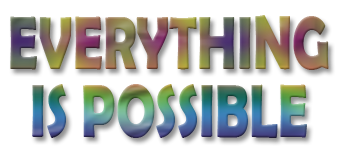Nootropics, the so-called Smart Drug
There are a couple of sorts of individuals that falter into the nootropic group. I wound up there around five years prior in light of the fact that I like medications and I needed better ones. I’d been perusing about abnormal medications on the Internet since I was 15, back when we purchased Salvia divinorum at the crude head shop close to the shopping center and tumbled down chuckling and attempted to get high on an amped-up kava homebrew.
 I’ve for the most part tried different things with about each upper and killjoy out there, over a really expansive range of legitimateness. Be that as it may, what started as idealism when I was fastened to a Texan young no man’s land later bloomed into something not so much disheartening but rather more invigorating, scholarly even. On the off chance that discernment is reality and we can really re-tune the five detects—and do as such securely and deductively—well, that is something for sure. Also, I’m not by any means the only one who thinks so.
I’ve for the most part tried different things with about each upper and killjoy out there, over a really expansive range of legitimateness. Be that as it may, what started as idealism when I was fastened to a Texan young no man’s land later bloomed into something not so much disheartening but rather more invigorating, scholarly even. On the off chance that discernment is reality and we can really re-tune the five detects—and do as such securely and deductively—well, that is something for sure. Also, I’m not by any means the only one who thinks so.
By the way if you want to know what is the best product you can get out there, then that is Adrafinil
“I think nootropics request for the most part to people with an easy chair (or expert) enthusiasm for brain research, neurology, science, and different aspects of mind science, who feel good possessing the part of both experimenter and subject,” an enthusiastic nootropics client with a degree in natural chemistry. “Nootropics may bid enormously to the individuals who have effectively rejected society’s sweeping judgment that medications are terrible.”
Much like jump bars, virtual frequents all have their own thrown of characters. On LongeCity, “the head gathering about developing the human lifespan”— and, all the more relevantly, broadening human awareness—one figure roused a kind of savior like respect: Isochroma. Isochroma had utilized the discussions for a considerable length of time, regularly among the first to attempt recently integrated medications. He composed with a craziness that drew closer psychosis, however dependably intelligibly and with a bizarre, short of breath style. He was a uber doser—one of the daring few who’d take huge, unfathomable measurements of a substance to see what lay at its external edges. Intrigued, I ate up his posts. That is the way I started to find out about nootropics.
In a modest bunch of austere, content based Web gatherings like LongeCity, nerds with a wild streak meet with recuperating addicts and psyche extending, flower child sorts in quest for experiential information—the kind standard science can’t or won’t give. The outcome is an abnormal scholarly compound: virtual symposiums where striking souls ingest chemicals that science scarcely has a name for—and afterward they blog about it.
The class of medications known as “nootropics” traverse an expansive, heterogeneous swath of psychoactive substances. Numerous things that could be called nootropics are legitimate, regularly in light of the fact that the law either doesn’t think about it or simply doesn’t comprehend what to do with it yet. You can purchase some nootropics, in some cases showcased as “savvy medications,” at Whole Foods alongside the Vitamin D supplements. Others just appear available to be purchased online in restricted amounts, straight from being incorporated and at no other time tried on people.
 “The greatest obscure element stays long haul impacts,” the psychonaut with the biochem foundation clarifies. “Where online discussions and “beginner” wellsprings of data are light years in front of authority exploration and regulation for by far most of these substances, the recency of a large portion of them makes long haul data just inaccessible anyplace.”
“The greatest obscure element stays long haul impacts,” the psychonaut with the biochem foundation clarifies. “Where online discussions and “beginner” wellsprings of data are light years in front of authority exploration and regulation for by far most of these substances, the recency of a large portion of them makes long haul data just inaccessible anyplace.”
Actually, here on the crowdsourced bleeding edge of cerebrum science, that is a piece of the claim. “Past the real experimentation with nootropics, the exploration and examination concerning a portion of the more exclusive corners of what we know (and don’t yet know) about how our brains work is a captivating activity unto itself.”
Nootropics are all over the place and no place
For a group living on the razor-dainty edge of cerebrum science, these flourishing commercial centers of thought and experience for the most part haven’t seen an overhaul in 15 years. Well before the Silk Road, there was Erowid—one of the Web’s liveliest and regularly most solid spots to peruse about medications. Established in 1995, Erowid pulls in both exhausted high schoolers hoping to get high on what’s in the flavor bureau and genuine psychonauts—voyagers of changed conditions of cognizance. Bluelight and LongeCity are two more online medication gathering stalwarts, outstanding for their accentuation on security and hard science.
The expression “psychonaut” may seem like a doublespeak for any stoner pursuing a high, yet it really portrays a free subset of individuals who try different things with medications with expectations that are frequently more educated, orderly, and in some cases profound than easygoing medication misuse. The psychonaut and nootropics groups cover actually, both stressing the quest for information and experience, and without a doubt numerous nootropic gatherings endorse what’s known as the “Shulgin convention,” a technique of safe measurement spearheaded by incredible scientific expert and psychonaut Alexander “Sasha” Shulgin.
Nootropic groups wax wonderful finally about subjective conditions of elation, sharpness, and quiet. At the point when another compound appears, gathering clients appear to be verging on wired in foresight of their first run round with it.
“I saw energizing news that [a nootropics retailer] at last got a little bunch of Unifiram and made it accessible to buy at 22 dollars for 250mg,” one client composes, starting another gathering string. “As Sunifiram picked up so much prominence when it turned out to be promptly accessible, I thought it would be a smart thought to make this string for the individuals who wish to share any encounters they have had, or will have with Unifiram.”
The class of medications known as “nootropics” traverse a wide, heterogeneous swath of psychoactive substances.
A vial of Unifiram, one of the more current nootropics, ships in a golden jug no greater than a thumb. After four days, the primary individual records start to pour in:
Took my first measurements of Unifiram today, 3mg. Impacts appear to be fundamentally the same to Sunifiram, in spite of the fact that somewhat less expedient and more eugeroic. Around a 10% decline in response time, and every one of my faculties subjectively feel elevated. I’m seeing little, generally overlooked subtle elements in my surroundings. Impacts began around 30 min after oral dosing.
Why get high when you can get better?
Fervor aside, nootropics clients don’t plan to deliver a “high” in the conventional sense. The thought is that a significant number of these substances can really turn out to be more strong after some time, precisely the inverse of addictive medications like cocaine or heroin, which rapidly make a resistance in clients, who always in the end need to up their measurement to get high, frequently at their own hazard. In the universe of nootropic gatherings, drugs like Adderall and Xanax—excellent uppers and killjoys from the pharmaceutical world—are regularly disparaged as “neurotoxic.”
“I would agree that Piracetam, modafinil, A-GPC and so forth are all more beneficial options than the old, dull, chilly amphetamines,” one client writes in a string about the longitudinal impacts of Adderall, a harsher kind of shrewd medication—and one since a long time ago supported by the pharmaceutical business.
Nootropics clients don’t expect to create a “high” in the customary sense.
Dissimilar to a number of Big Pharma’s most noteworthy hits, some nootropics are proclaimed as “neuroprotective”— in a perfect world fit for enhancing records of intellectual capacity after some time, not simply in hazardous spurts. “I would suggest piracetam as a mental stimulant alongside choline,” a client reacts in the same string. “Other safe stimulants are rhodiola rosea, st john’s wort and maybe ginseng.” On this gathering and numerous others, clients pay special mind to each other. Numerous strings underline the significance of eating regimen and activity. A few even reject caffeine as excessively risky, however green tea is for the most part all around preferred for its dynamic fixing, the amino corrosive L-theanine. Try not to need to drink tea? Purchase 100 grams of mass L-theanine powder on Amazon for $20.
The craziest part about every one of this is these faceless nootropics aficionados may be on to something. The most prominent gatherings capacity like a quick activity proposal survey: Users toss out potential substance combos, known as “stacks,” and even theoretical atomic mixes, regularly referring to darken however shockingly strong exploratory examination. At that point, it’s the ideal opportunity for the companion survey. It’s not unprecedented for clients to take note of their own experiences in science, psychiatry, and other related fields, sprinkling their posts with complex sub-atomic graphs and neuroscience shorthand.
Most nootropics may be legitimate and unscheduled, yet a society of namelessness holds on. The FBI isn’t liable to think about the refinement, yet on most unmistakable medication gatherings clients still allude to themselves as “SWIM” (slang for “somebody who isn’t me”), shunning first-individual pronouns and recognizing individual points of interest. “SWIM has been utilizing piracetam effectively for some time,” one string starts. “SWIM has purchased some nootropics and is thinking about whether issues may emerge from this blend.”
The most well known discussions capacity like a quick activity postulation survey.
Client profile pictures have a tendency to be left clear or populated with a hallucinogenic example or an image. This isn’t a spot to act naturally, even while penning and distributed what frequently sum to exceedingly point by point, now and again enthusiastic, regularly imply diary passages.
The DIY experimental technique
Just subjective experience can go where science reasons for alarm or isn’t incentivized to tread. Clients put everything on the line to apply the exploratory strategy to their own particular examinations, frequently discounting variables and interpreting each and every subtle element of what they expended, when, and how.

